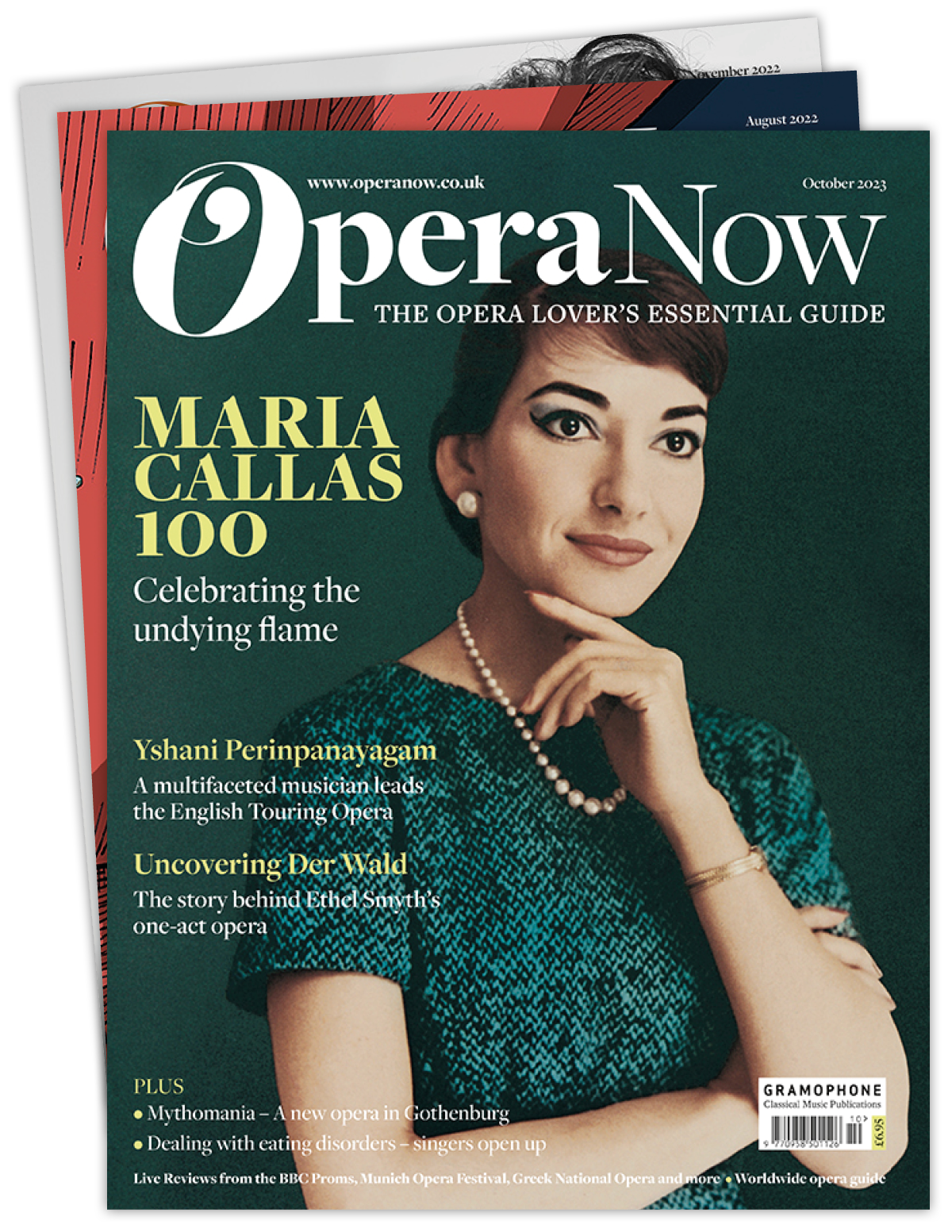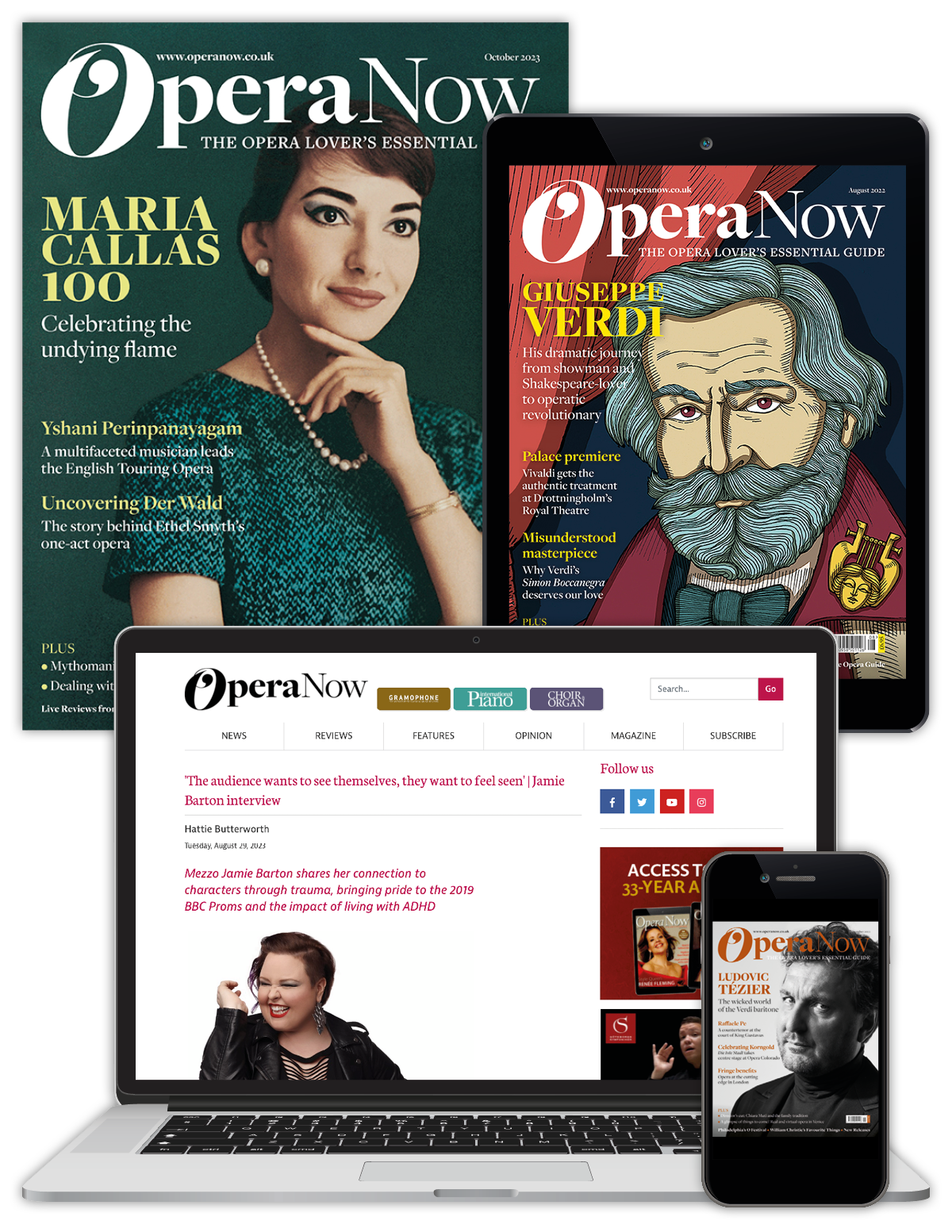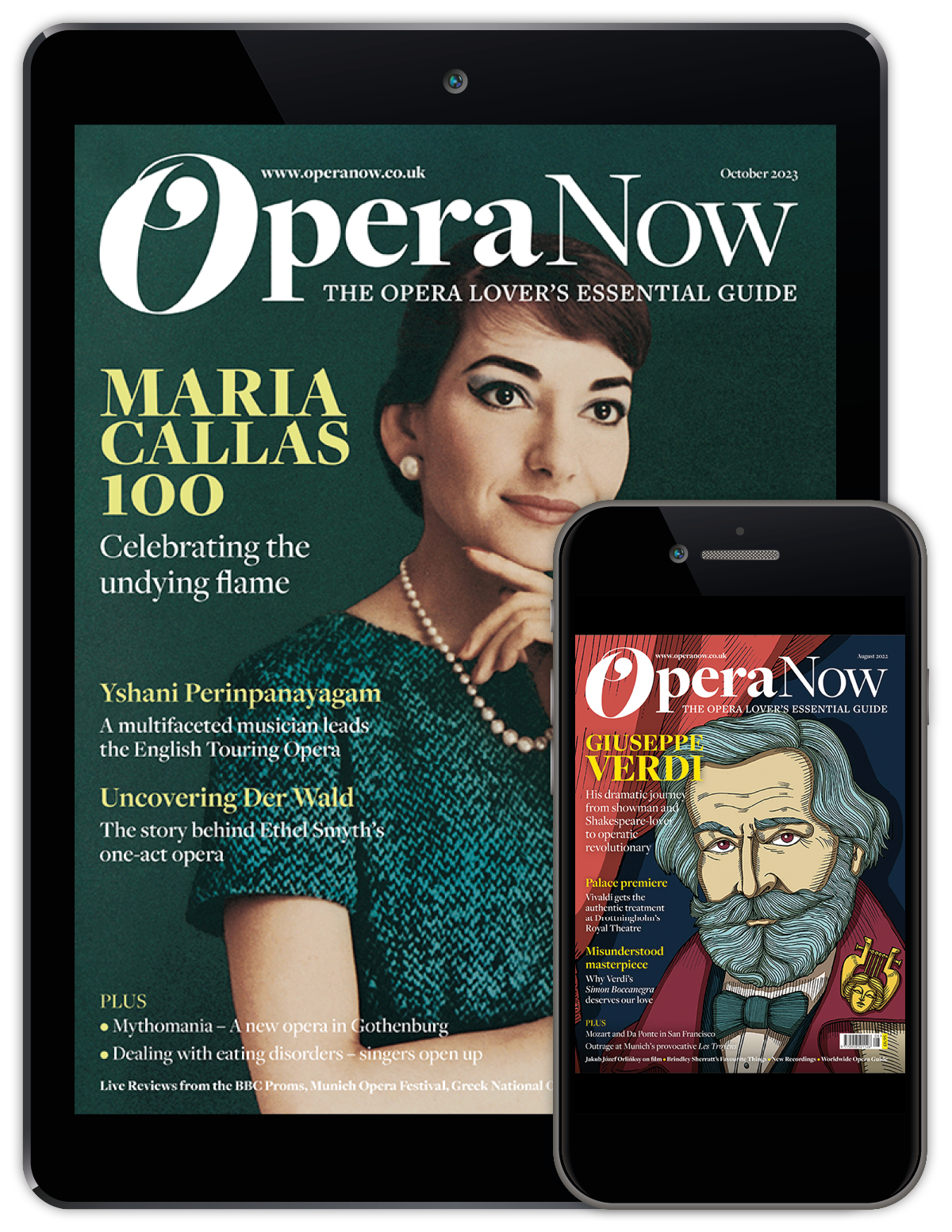Monteverdi: Orfeo at Santa Fe Opera | Live Review
Thomas May
Monday, August 14, 2023
With a modernised score by composer Nico Muhly, Santa Fe's first Orfeo draws on a 'diverse palette of colours'
****
 Lauren Snouffer as La Musica/Speranza in Orfeo | Photo by Curtis Brown
Lauren Snouffer as La Musica/Speranza in Orfeo | Photo by Curtis Brown
The rousing fanfare that famously calls the audience to order for Orfeo was preceded by the sound of a modern orchestra tuning up – a preliminary signal of many surprises to come in Santa Fe Opera’s first-ever staging of the epochal work by Claudio Monteverdi.
Conventional parameters that have grown up around historical performance practice were cast aside in favour of a radical reconsideration of Orfeo’s contemporary resonance in this production directed by Yuval Sharon, complete with a brand-new orchestration of Monteverdi’s score that Santa Fe Opera commissioned from the American composer Nico Muhly.
This approach had a practical origin: the need to take into account the acoustic conditions of Santa Fe Opera’s unique open-air venue in the high desert terrain of northern New Mexico – a setting not particularly conducive to period instruments. But it’s also intended to make Orfeo more readily performable for opera companies with only large houses and modern ensembles at their disposal.
The musical and theatrical beauty of the production overcame any misgivings that the result might be a non-sequitur of sensibilities separated by more than four centuries: especially in the sensitive hands of the conductor Harry Bicket, the contemporary guise clothing this Orfeo was revelatory, not anachronistic.
 Amber Norelai as Euridice and Rolando Villazón as Orfeo | Photo by Curtis Brown
Amber Norelai as Euridice and Rolando Villazón as Orfeo | Photo by Curtis Brown
A successful opera composer in his own right, Muhly has comfortably incorporated inspirations from early music sources into his compositions. His Orfeo orchestrations not only respect Monteverdi’s original vocal lines but pay close heed to the details of Alessandro Striggio’s libretto, from its pastoral rhapsodising to the litany of lamentations provoked by the ‘ancient wound’ of loss (to borrow a phrase from Plutone – the ruler of the Underworld himself not having escaped the pain of love).
Muhly draws on a diverse palette of colours: shimmering glockenspiel and high string harmonics, sepulchral pedal tones, expanded woodwinds and harp as the continuo. If the frequent shifts in timbre can seem hyperactive, they open up a new dimension to the narrative with instrumental voices that add commentary of their own between the sung notes. Muhly even seems to embed an informal survey of music history in his interpolations: a classical transparency of texture depicts the Arcadian scene of the wedding, while low brass infuse Brucknerian solemnity when we reach the shores of the River Styx.
Sharon put together an unconventional design team to create the production’s striking visual environment. ‘Performance architect’ Alex Schweder and ‘public space designer’ Matthew Johnson centred the events of the first two acts on a dome-like, bright green mound – a ‘monte-verde’ – that was covered with white cloth for the Prologue and then populated by rejoicing shepherds and nymphs, all clad in Carlos J. Soto’s whimsically exuberant day-glow costumes. At the news of Euridice’s death, a black shroud descended to cover the mound. In one of those collaborations between art and nature that are a signature of Santa Fe Opera productions, dusk proceeded to darken the distant mountains visible beyond the open stage in time for the arrival of La Messaggera (the delivery by Paula Murrihy, stirring in its pathos, was a highlight of the performance).
The mound opened up and expanded to depict the Underworld as a mist-filled cave, spectrally lit by Yuki Nakase Link, its surfaces flickering with eerie projections designed by Hana S. Kim. James Creswell and Blake Denson loomed as formidable sonic presences in the roles of Caronte and Plutone, respectively – enhanced by Mark Grey’s sound design. Caitlin Aloia’s Proserpina injected a note of human sympathy amid this grimness.
 Santa Fe Opera Chorus | Photo: Curtis Brown
Santa Fe Opera Chorus | Photo: Curtis Brown
But the most astonishing coup de théâtre was reserved for Orfeo’s odyssey into Hades. Suspended high above the stage with wires, the protagonist undertook an uneasy aerial journey that called for him to twist and turn, defying gravity in Orfeo’s central demonstration of the power of music in ‘Possente spirto’.
Rolando Villazón, cast as the star, had suffered a back injury during dress rehearsal that led to his withdrawal from opening night, but he returned to the stage as Orfeo for the second performance, which I attended. It was a fascinating interpretation, despite an occasional harshness in his voice that marred the thoughtful phrasing of his lines. Villazón made it seem as if he were encountering these experiences of joy and loss in real time, not as mythic representation. Where vocal suavity faltered, his command of physical gesture and vivid stage presence conveyed the emotional extremes that define Orfeo.
Sharon played down the mythic resonance of this archetypal story in favour of a kind of allegorical rewiring of its patterns to speak to our era of pandemic loss and uncertainty. It was no coincidence that the same performer was cast as La Musica and La Speranza. Singing with an ethereal clarity, Lauren Snouffer was depicted as a seriously ill patient who rises from her sickbed at the start. Music is the reliable pharmaceutical remedy. The repeated loss of Euridice (gracefully sung by Amber Norelai) leads to an attempt to resurrect her through technology: in the final act, Orfeo returns to the green mound with a golden gramophone, attempting to preserve her voice. After the singer has been invited by his father Apollo (Luke Harnish) to ascend to heaven, the phonograph remains behind for the survivors to remember him by.









